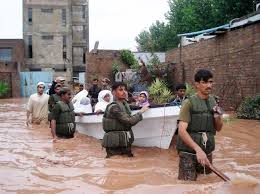Now a day, many disasters are striking all the corners of India and the globe. Much of human loss and unnecessary destruction of infrastructure can be avoided with more foresighted specific planning. During emergencies various service organizations often face significant problems in transporting large quantities of food, clothing, medicine, medical supplies, machinery and personnel from different points of origin to different destinations in the disaster hit areas i.e., supply chain management . The transportation of supplies and relief must be done quickly and efficiently to maximize the survival rate of the affected population and minimize the cost of such operations i.e., humanitarian logistics.
Unfortunately, the inadequate response to Tsunami and Earth quakes showed the incredible need for the better mechanisms in emergency operations.“Supply Chain Management,” (SCM) is a systems-approach and global-view of the entire relief effort to manage the web of interrelated mission segments. No standard model exists for using supply chain management techniques to provide relief to populations affected by disasters. For managers of humanitarian sector, coordinating logistics during a relief effort is often a daunting task that can result in the loss of life and resources if not done quickly and effectively.Emergency management is a continuous process during disasters . It is essential to have comprehensive emergency plans and evaluate and improve the plans continuously.
Humanitarian logistics has the opportunity to increase its contribution to disaster relief and to be recognized for that contribution by implementing initiatives in the areas of knowledge management, technology, measurement, community, and positioning. While moving the relief items to disaster sites will continue to be an important role for logistics, the strategic focus must be on providing timely information, analyzing that information to rare insight as to how to improve operations.
Humanitarian logistics information systems can improve the effectiveness of humanitarian supply chains. The effectiveness can be ensured by providing timely and accurate information regarding the supplies required and their prompt delivery by, enabling the donors to be more responsive to the needs of beneficiaries. Humanitarian logistics operates across the disaster management cycle. Humanitarian logistics information systems can improve logistics activities in each of the phases and also help to provide continuity to humanitarian operations throughout the entire cycle.
There are six main components (i.e., humanitarian operations in supply chain network) in the supply chain to provide relief commodities for disaster victims in affected areas.
Logistics Centre (LC)
Permanent facilities that receive, store, ship, and recover disaster commodities and equipment. Examples of disaster relief commodities include ice, water, meals ready to eat (MREs), blankets, cots, flashlights, tarps, sleeping bags and tents. Disaster relief equipment’s include emergency generators, personal toilet kits, and refrigerated vans.
Private Storage Sites (PSS)
Permanent facilities that are owned and operated by private industry and store commodities under a deal with government. Products mainly depend upon the type of facility.
Vendors Sites (VS)
Representing vendors from whom commodities are purchased and managed.
Mobilization Vehicles (MVS)
They basically have certain non-perishable items and usually are under the control of government agencies.
Temporary storage sites (TSS)
All the shipment is stored in this place and the new stock is directed to TSS.
Regional Distribution Sites (RDS)
These are at the affected area and from them goods are distributed to the people.
Click here for government certification in Logistics & Supply Chain Management





4 Comments. Leave new
Good effort!
Great article..!
Great effort..
well written